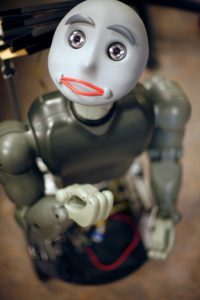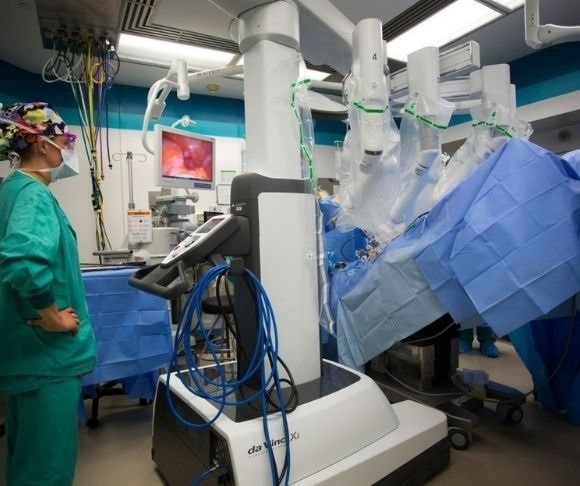Technology has been both a blessing and a curse. In the healthcare sector, it has generally been a positive addition, bringing us life-saving medicine and other advancements. But as robots replace nurses in hospitals, we may see the negative side of technology degrade and dehumanize the industry. The idea of robots taking American jobs was once a laughable, futuristic fable, but here we are in 2022, and the robots are picking up our slack. In a field where human interaction and personal care are vital, what will this integration mean for how we engage in healthcare, and what cybersecurity concerns does it bring?
Hospitals are Desperate
 As previously reported by Liberty Nation, a portion of the Great Resignation was fueled by burnout. The COVID-19 pandemic destroyed the work/life balance of nurses, doctors, and other healthcare providers. Hospitals and facilities across the country can’t keep enough nurses on staff. As a result, they’ve been forced to shell out up to six times more for travel nurses. Agencies contract these men and women out to areas that need them most. Yet there still aren’t enough practicing nurses to fill all open and necessary positions.
As previously reported by Liberty Nation, a portion of the Great Resignation was fueled by burnout. The COVID-19 pandemic destroyed the work/life balance of nurses, doctors, and other healthcare providers. Hospitals and facilities across the country can’t keep enough nurses on staff. As a result, they’ve been forced to shell out up to six times more for travel nurses. Agencies contract these men and women out to areas that need them most. Yet there still aren’t enough practicing nurses to fill all open and necessary positions.
So, what’s the solution? Robots, of course! And some nurses welcome these helpful fellows. Moxi, a 6-foot-tall bot operating in Mary Washington Hospital of Fredericksburg, Virginia, is only one of many specialized delivery robots. Moving medication, lab samples, personal items, and supplies through hospital halls on all floors, Moxi does the work nurses don’t have time to do.
Diligent Robotics, founded by a former Google X researcher and professor at the University of Texas at Austin, created Moxi. Fifteen of these fascinating robots are staffed across U.S. hospitals, with 60 more on the way by the end of the year. The company launched in 2017 and began communications with hospitals for implementation in 2018. The CEO shared, “almost every single health care system is thinking about robotics and automation or has robotics and automation on their strategic agenda.”
Tech in healthcare isn’t new, and clearly, it’s embraced. Moxi isn’t a registered nurse. It can’t draw blood, take vitals, perform CPR, or physically move patients. With a robotic arm, audio, and heart-shaped eyes on a digital face, Moxi doesn’t currently appear to be a threat to nurses, but it has turned out to be incredibly helpful as an assistant.
Loss of Human Connection

Companion robot (Photo by Bob Chamberlin/Los Angeles Times via Getty Images)
Like telehealth medicine, robots lack that personal connection that’s invaluable and vital to the healthcare industry. There’s no debate that these depersonalized additions have been incredibly beneficial. But they lack one on one, in-person human connection.
Although Moxi primarily runs low-risk, repetitive tasks that save nurses time and energy, they make a difference. However, these small, simple task bots aren’t the endgame. According to Emergen Research, the global healthcare robotics market will reach $34.79 Billion by 2027. From neurosurgery to emergency response, companies are working on pushing technology as far as it can go in helping staff and saving lives.
Having one Moxi deliver your medication in the ICU or assist your nurse feels relatively normal. But if you show up to an emergency room and a robot checks you in, that’ll be a little strange. Or if 5-10 robots are roaming through the halls of your hospital, capable of more significant tasks than just fetching lab results, it could become overwhelming.
Cybersecurity Concerns
To no surprise, experts warn of cybersecurity concerns with these robots, despite their helpfulness. Major security flaws have been identified in the servers that control robots like Moxi. These “new employees” skip the security clearances and background checks necessary to handling medicine and engaging with patients. Cynerio, a cybersecurity company specializing in the healthcare sector, was the first to flag a significant vulnerability in the server for TUG robots. Similar to Moxi and Diligence Robotics, these bots perform the same tasks.
However, they become a massive, easy target for hackers when connected to the internet. Cynerio found that these robots give hackers “an access point to laterally move through hospital networks, perform reconnaissance, and eventually carry out ransomware attacks, breaches, and other threats.”
TUG robots, Moxi, and other automatons may be a breath of fresh air for burnt-out, struggling nurses who can now leave basic tasks to these machines. But as technology creeps further into healthcare, cybersecurity concerns will only heighten.




